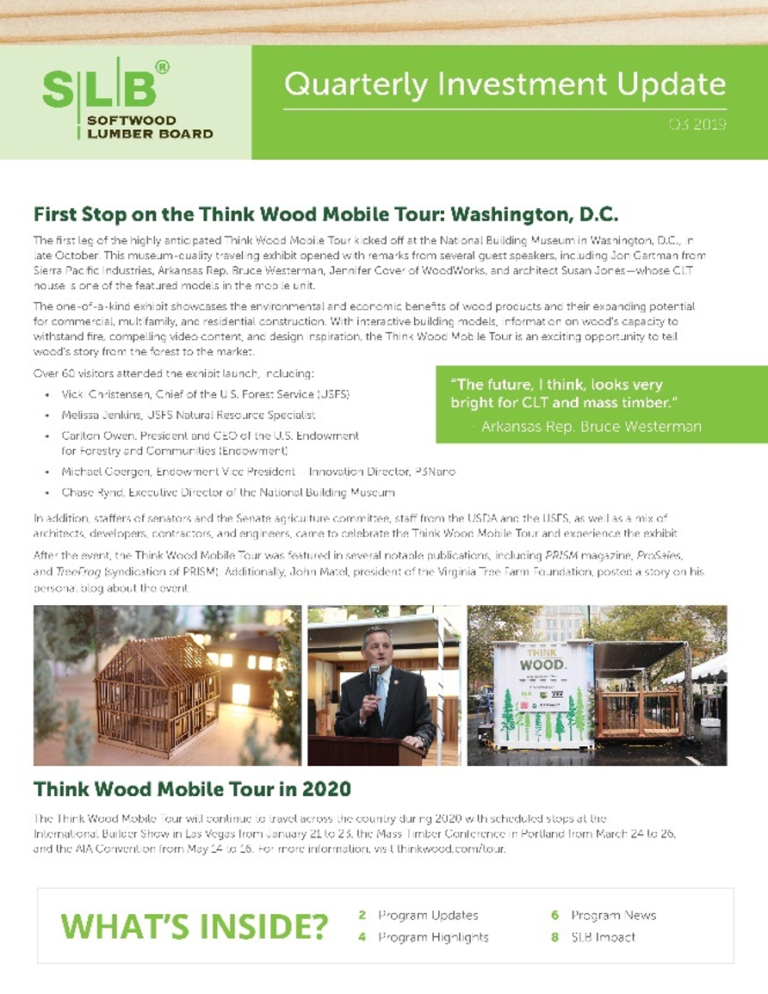HIGHLIGHTS
PROGRAM UPDATES
Denver Adopts Tall Mass Timber Building Code Wood on Wheels: Interactive Exhibit Showcases Possibilities of Lumber Products Media Partnerships Direct Educational Content to Specifiers The AWC and IAFC to Provide Mass Timber Education to Fire ChiefsINDUSTRY NEWS
SLB-funded MIT Research Points to Wood’s Carbon Advantage New Product Tackles Thermal Bridging Within Stud Itself UK Building Professionals Eye Different Paths to Climate Change Plans Submitted for First CLT Building in San Jose BBC Interview Touches on Mass Timber’s Multiple Benefits Engineering and Construction Industry Moves Toward Digitization Acquisitions May Reshape Lumber Building Materials Sector Washington Post Considers CLT’s Carbon Impact San Francisco to claim Largest Mass Timber Office BuildingINSIGHTS ON THE COMPETITION
Precast Concrete Firms Assert Environmental BenefitProgram Updates
Denver Adopts Tall Mass Timber Building Code
The City of Denver’s newly adopted 2019 building code includes tall mass timber provisions approved in the 2021 International Building Code (IBC). The American Wood Council (AWC) provided ongoing technical assistance to the city and the Structural Engineers Association of Colorado during the city’s review and deliberation process. There will now be a four-month period wherein new projects can use either the 2016 Denver Building Code or the newly adopted 2019 version. After four months, all building and fire code permits will be processed using the 2019 Denver Building Code.
Wood on Wheels: Interactive Exhibit Showcases Possibilities of Lumber Products
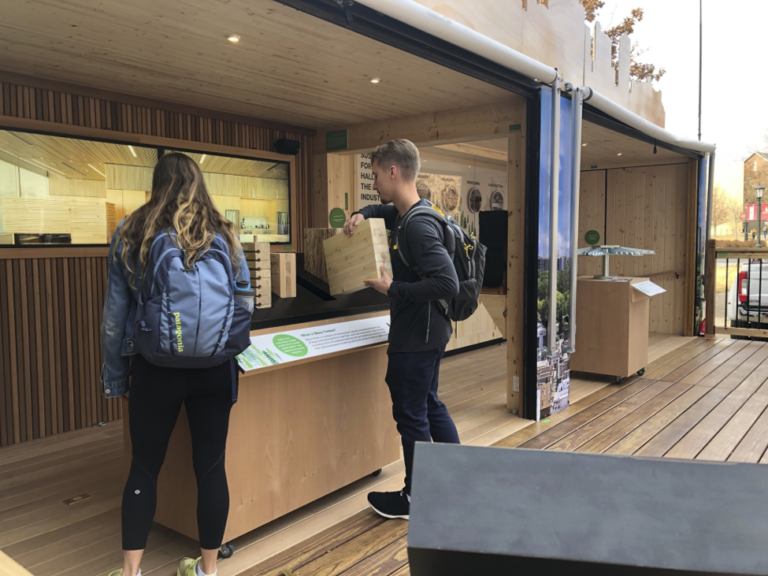
The Think Wood Mobile Tour continues to showcase the environmental and economic benefits of softwood lumber and engineered wood products in residential and commercial construction. After stops at University of Arkansas campuses in November, the tour headed west in early December to the JLC Live Northwest show in Portland, Oregon, one of the largest regional trade events for builders, remodelers, contractors, and other building professionals in the Pacific Northwest.
To date, nearly 3,500 people have experienced the Think Wood Mobile Tour, and it has generated more than 55 specifier leads. The tour is having its desired effect in terms of creating positive perceptions of and building loyalty for wood. According to one University of Arkansas student, “I never thought of trees as a crop. I thought that we were decimating forests, but this has changed my mind.”

The tour was just at the International Builder Show in Las Vegas from January 21 to 23 and will continue its travel, also appearing at the Oregon Logging Conference in Eugene, Oregon from February 20 to 22, the Mass Timber Conference in Portland, Oregon from March 24 to 26 and the A’20 Conference on Architecture in Los Angeles from May 12 to 16.
Click here to request a tour stop at your upcoming industry or education event.
Media Partnerships Direct Educational Content to Specifiers
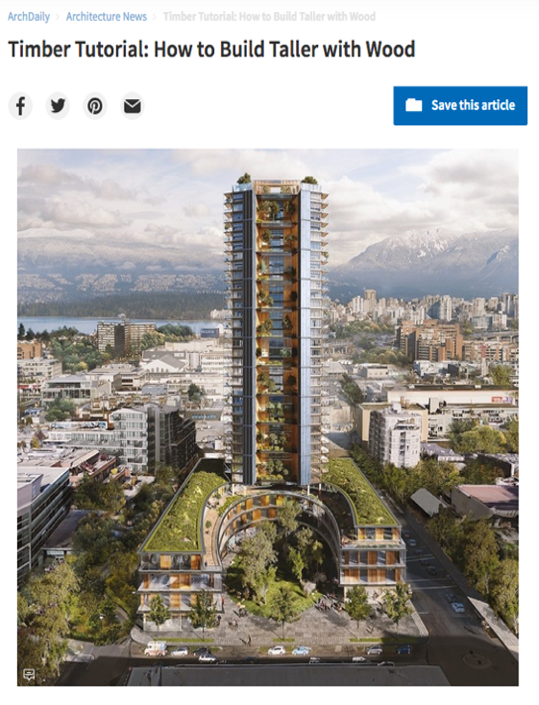
The AWC and IAFC to Provide Mass Timber Education to Fire Chiefs
In December 2019, the American Wood Council (AWC) and the International Association of Fire Chiefs (IAFC), Fire and Life Safety Section, signed a landmark agreement to jointly develop and roll out fire service education on new tall mass timber building code provisions. The IAFC, a network of more than 12,000 fire chiefs and emergency officers, had previously publicly opposed tall mass timber buildings, but it is revising its position following the AWC’s engagement with its membership on mass timber fire performance. The resultant educational partnership between the AWC and the IAFC marks the first time a leading fire service organization has partnered with a building material association to provide education to line fire chiefs and incident commanders.
Industry News
SLB-funded MIT Research Points to Wood’s Carbon Advantage
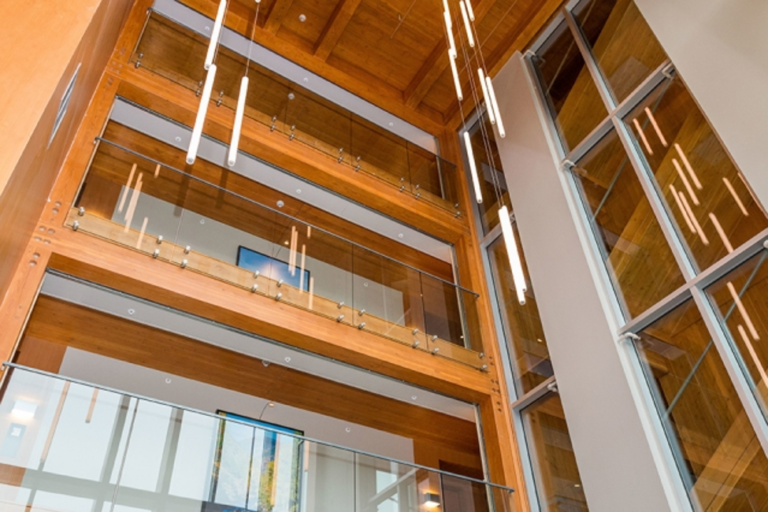
New research by MIT that was published in the journal Energy Economics explores the potential environmental and economic impacts of substituting lumber for cement, steel, and other energy-intensive building materials. The study found that the CO2 intensity of lumber production is about 20% less than that of fabricated metal products, less than 50% that of iron and steel, and less than 25% that of cement.
The study’s authors caution that their results do not consider potential increases in CO2 associated with tree harvesting or the long-term sequestration offered by wood building materials. However, they conclude that, “setting aside those issues, lumber products appear to be advantageous compared with many other building materials and offer one potential option for reducing emissions from sectors like cement, iron, and steel, and fabricated metal products—by reducing the demand for these products themselves.”
The study was funded in part by the SLB and Weyerhaeuser.
Read more here.
New Product Tackles Thermal Bridging Within Stud Itself
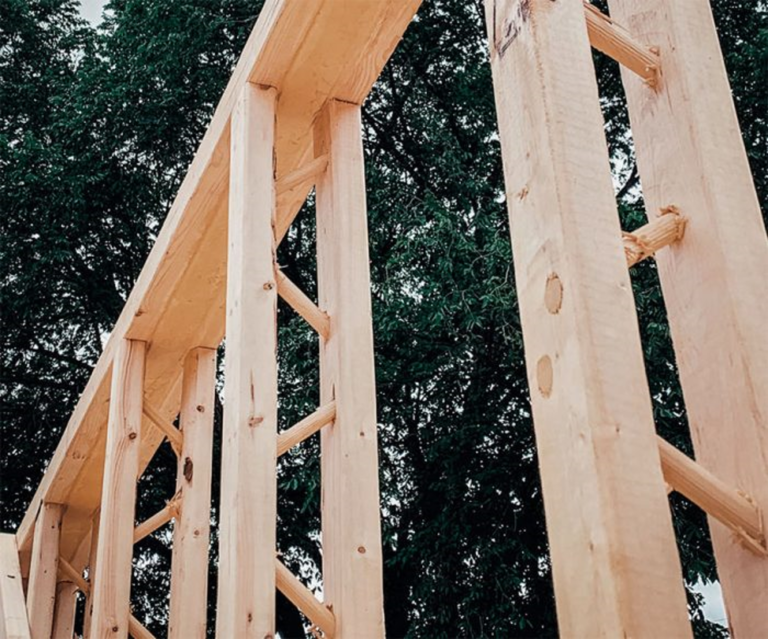
High-performance exterior walls typically handle thermal bridging at framing members by wrapping building exteriors in insulation or framing with staggered- or double-stud walls. Tstuds offer a new, energy-efficient solution that is designed to break thermal bridging within the stud itself. Each Tstud consists of two 2x3s on the flat, connected by angled wood dowels; the space between the 2x3s is either left empty or filled with closed-cell spray foam. This construction enables Tstuds to act like engineered trusses, not solid-sawn lumber, available for use in nearly any exterior wall framing element, including studs, jacks, cripples, plates, and headers.
To learn more about Tstuds, click here.
UK Building Professionals Eye Different Paths to Climate Change

The UK Green Building Council (UKGBC), a charitable interest group of builders and 63 architecture practices in the United Kingdom, recently urged that all buildings and infrastructure use nature-based solutions, such as plantings and green roofs, to ensure that they are climate resilient and deliver higher environmental net gains. UKGBC believes that these solutions will also lead to more livable and desirable spaces, increasing the longevity of buildings.
However, Bill Dunster, founder of the zero-carbon architecture firm ZEDfactory, believes UKGBC’s ambition is insufficient and amounts to “fiddling while Rome burns.” Dunster instead urges the sector to focus on reducing the ecological footprints of buildings, saying, “We need to make buildings which are as energy efficient as possible, built to last, which have renewable energy sources, and use materials which reduce the embodied carbon footprint.”
Read more here.
Plans Submitted for First CLT Building in San Jose
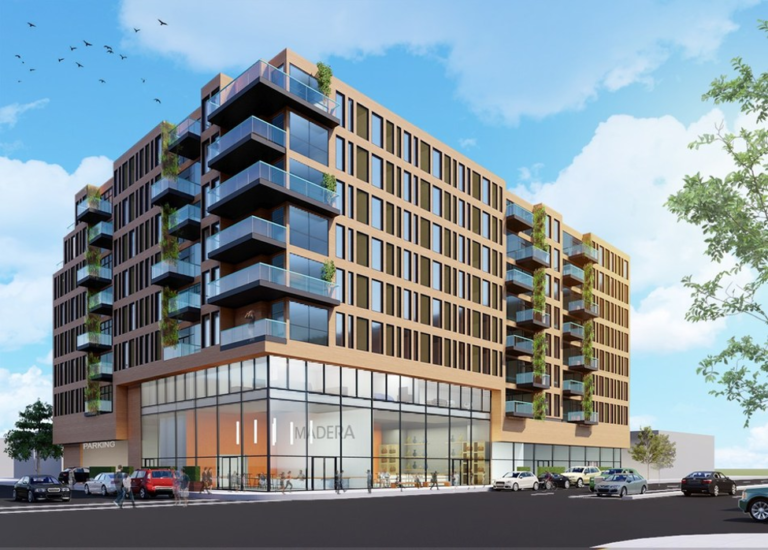
Urban Catalyst, a multi-asset opportunity zone fund based in San Jose, California, has submitted preliminary plans to the city for a multifamily apartment project, Madera @ Google Village, a joint venture with Thang Do of Aedis Architects. Madera @ Google Village will be located in downtown San Jose adjacent to the planned Google Village and Diridon Station, the largest multimodal transit hub on the West Coast. Once completed, Madera @ Google Village will house up to 250 tenants and include 4,000 square feet of ground-floor retail and parking. With construction slated to start in Q1 2021 and be completed in Q4 2022, the project will feature CLT.
“We’re excited this property will be the first CLT housing project in the Silicon Valley and one of the first in California,” said Do. “CLT is a great approach to building that takes advantage of prefabrication to reduce construction time and cost, while bringing significant benefits to slowing down climate change.”
Read more about the project here.
BBC Interview Touches on Mass Timber’s Multiple Benefits
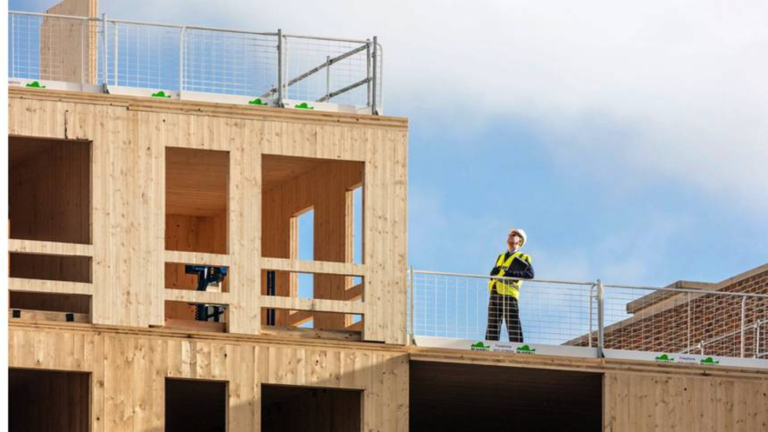
As part of its ongoing reporting of CLT’s growth across the globe, Treehugger recently covered a BBC interview with pioneering architect Andrew Waugh in which he talked about the wide-ranging benefits of building with wood. In addition to lauding mass timber’s carbon footprint and role in carbon capture and storage, Waugh also touched on the importance of CLT in promoting job creation and economic development in rural areas, particularly in the United States.
The BBC piece quotes Melissa Jenkins of the U.S. Forest Service regarding the Forest Service’s promotion of mass timber, noting that many planted forests are now “too dense, especially with small-diameter trees, creating conditions that fuel intense wildfires.” Because mass timber can be made using small-diameter trees, it “creates an economic incentive to use forests sustainably while leaving them intact, making communities safer while also developing local economies.”
Read more excerpts from the BBC and Waugh’s interview here.
Engineering and Construction Industry Moves Toward Digitization
McKinsey & Company continues to track the engineering and construction industry’s increasing digitization. Long perceived as less vulnerable to transformative change because of technology and automation, the industry is increasingly embracing technology to cut project timelines, reduce costs, and improve safety. Based on the size of the industry alone—currently assessed at $10 trillion a year and contributing 13% of global GDP—McKinsey believes it can unlock significant value through technology-enabled productivity improvements.
McKinsey notes several key trends that point to increasing digitization, including ever-growing flows of capital into engineering and construction technology; the rise of innovative start-ups that are affecting every aspect of the supply chain from materials to contracts to design and simulation; and public-sector demand for technology adoption, especially 4-D and 5-D building-information modeling.
Read more about McKinsey’s analysis of the construction industry’s digitization here.
Acquisitions May Reshape Lumber Building Materials Sector
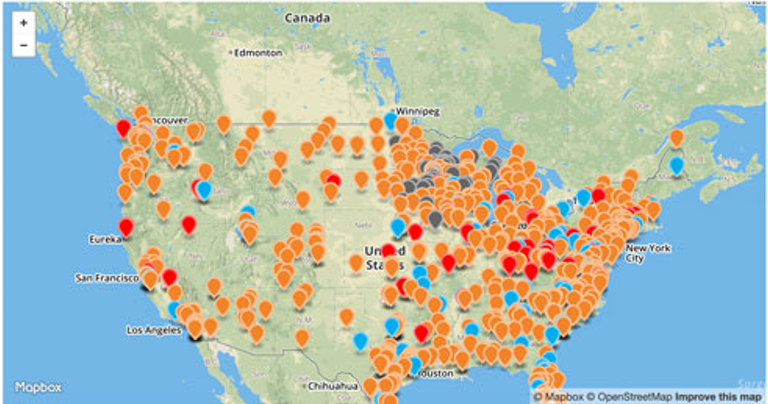
Recent blog posts, including from ProSales contributor Craig Webb, draw attention to the acquisition market and its effect on lumber building materials (LBM) dealers. According to analysts, the current annual volume of building material locations involved in openings, closings, or acquisitions tends to reinforce the common belief that the LBM channel is shrinking rapidly as equity-backed chain operators expand.
While some signals suggest that LBM composition will not change noticeably barring something dramatic, others believe that consolidators will gain a measurable, competitive advantage from acquisitions. For example, Builders FirstSource’s December purchase of Orlando-based Raney Construction “isn’t your typical LBM deal story,” according to Webb. “Raney regularly appears on the lists of America’s most advanced proponents of offsite construction. BFS isn’t just buying assets; it’s buying brainpower.”
Read more about shifts in LMB here.
Washington Post Considers CLT’s Carbon Impact
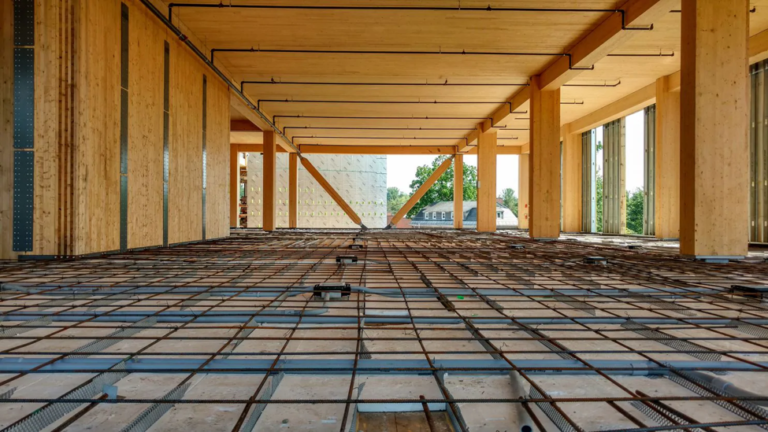
The Washington Post recently turned its attention to the rapid growth in demand for CLT in mid-rise and tall buildings across the United States and the ongoing debate over CLT’s ability to reduce climate change. The piece notes various completed and planned CLT projects, including the John W. Olver Design Building at the University of Massachusetts at Amherst, and reflects the views of both proponents and skeptics—including those within the concrete industry—of CLT’s likely impact on climate change. At the core of the debate is whether mass timber can fully substitute for carbon-intensive materials and thus deliver significant reductions in greenhouse gas emissions. While some U.S. environmental and interest groups cast doubt on the size of CLT’s likely carbon benefit, others, including the Urban Land Institute, label CLT as a “good replacement” for steel.
Read more here.
San Francisco to claim Largest Mass Timber Office Building
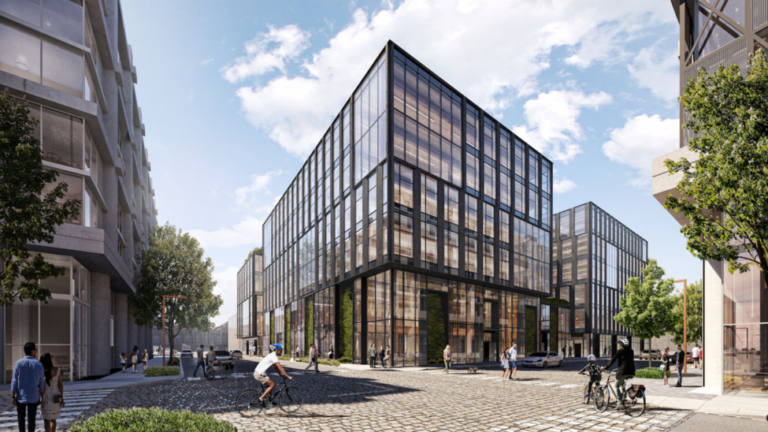
Portland, Oregon–based Hacker Architects recently revealed plans for an 85-foot-tall mass timber building on San Francisco’s historic Pier 70. Once completed, it will be the largest mass timber office building in the United States.
Spearheaded by Brookfield Properties, the six-story, 310,000-square-foot structure will feature CLT floor slabs, glulam columns and beams, steel lateral seismic framing, and metal cladding. Hacker Architects has extensive experience in designing wood-heavy projects and has been a long-time recipient of WoodWorks’ technical support, having first contacted WoodWorks in 2014 as it started to explore the use of CLT in its projects.
Read more about the project here.
Insights on the Competition
Precast Concrete Firms Assert Environmental Benefit

Specifiers of mass timber have long touted its efficient assembly as a distinct competitive advantage, with such assembly saving time and money and reducing environmental impact compared with on-site fabrication. Nearly identical claims are now being made by manufacturers of precast concrete components in promoting total precast buildings.
Encouraging specifiers to recognize the environmental benefits of precast is in line with the concrete industry’s growing recognition that it needs to make real changes to reduce its contribution to climate change.
Read more here.
Industry Resources
FEA Housing Dashboard
Virginia Tech’s Monthly Housing Report
This monthly housing commentary report is a free service of Virginia Tech and is intended to help one gauge future business activity in the U.S. housing market.
November 2019 Reports (released in January 2020)
Part A: November Housing Commentary
Part B: November Economic Conditions


